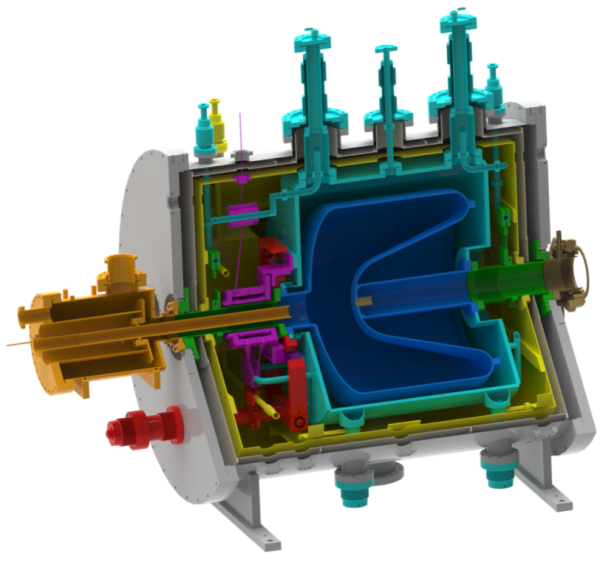High Brightness Electron Sources
All electron accelerators begin at the source, the source of electrons, that is. Electron bunches are produced at a cathode then accelerated by a DC or RF electric field to form a high energy beam that can be injected into the accelerator. The electric field is produced inside of an electron gun, and can be as simple as two metal plates a short distance apart connected by a battery, or a complicated copper RF gun like what is used for LCLS.

Electron guns have been in use for well over 100 years, but in the past few decades a number of big changes have taken place, leading to the production of extremely ‘bright’ beams. The original electron sources were analogous to old-fashion incandescent light bulbs, whereas new sources are more laser-like in their properties. High-brightness is a measure of how ‘laser-like’ the electron beam is, and brightness is an important parameter for high-energy physics colliders, free-electron lasers and electron microscopy.
The biggest improvement was the development of the RF photocathode gun at Los Alamos. This technology was improved at various labs and then perfected at SLAC, resulting in the RF gun that is the electron source for LCLS. This gun uses a photocathode to produce the electrons – a photocathode is a material that generates electrons when it is illuminated by a laser. Photocathodes can be metals, semi-conductors and even diamonds. One of the most important properties is that the electrons are emitted only when the laser pulse is applied – this makes the device very efficient compared to older style sources and allows us to easily synchronize the pulses to match the frequency of the accelerator. Using RF (radio-frequency) to accelerate the electrons instead of DC (static voltage) permits much higher accelerating gradients and higher final energy out of the electron gun. The combination of a photocathode with high accelerating fields enables us to produce very high brightness electron beams. Both LCLS-I and LCLS-II use copper RF guns as their electron source. The LCLS-I gun is a high-frequency device using a copper cathode, it operates at very high electric field levels, but at a relatively low repetition rate (120 Hz). LCLS-II uses a lower frequency gun along with a semi-conductor photocathode – cesium telluride. The LCLS-II gun must operate at a much higher repetition rate, 1 MHz, thus cannot maintain as high an accelerating field. As with most accelerators, the electron source is designed to match the requirements of the rest of the accelerator. The LCLS-II-HE project, the high energy upgrade to LCLS-II, will allow the FEL to generate x-rays out to 12.8 keV, but simulations show that by using a new electron source with 5-10 times higher brightness will push the maximum x-ray energy out to 20 keV or more. Designing and installing a new electron source is much cheaper than what was done at XFEL at DESY, which used twice as many superconducting accelerating sections. To make a source with 5-10X higher brightness, the accelerator directorate is investigating developing a superconducting RF gun. A prototype of such a gun is shown in the picture, which was built several years ago at the University of Wisconsin. This gun should have higher electric fields and total energy than existing guns, and can support any type of photocathode material. We are also investigating new photocathode materials, which are necessary to produce the brightest beams possible.
